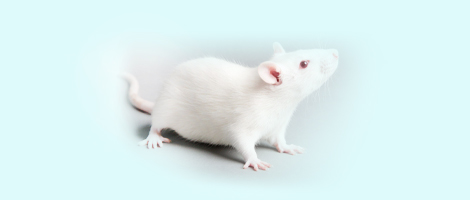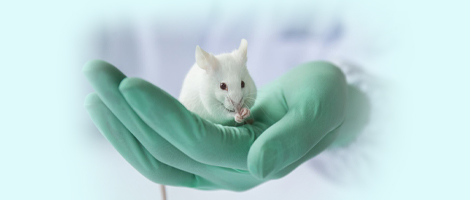













实验动物与比较医学 ›› 2025, Vol. 45 ›› Issue (5): 586-595.DOI: 10.12300/j.issn.1674-5817.2025.023
收稿日期:2025-02-18
修回日期:2025-06-13
出版日期:2025-10-25
发布日期:2025-10-23
通讯作者:
作者简介:刘 洋(1987—),女,博士,主治医师,研究方向:中西医结合治疗妇产科疾病。E-mail: taianliuyang@126.com
基金资助:
LIU Yang1, CHENG Laiyang2, GUO Zhongkun3( )(
)( )
)
Received:2025-02-18
Revised:2025-06-13
Published:2025-10-25
Online:2025-10-23
Contact:
GUO Zhongkun (ORCID: 0000-0003-4461-7670), E-mail: zhongkunguo@126.com摘要:
围绝经期综合征(perimenopausal syndrome,PS)是女性在绝经前后因雌激素水平减少或波动而出现的月经紊乱、烘热汗出、焦虑抑郁、头痛失眠等一系列生理和心理症状,严重影响生活质量。目前,针对PS的治疗方式主要为绝经激素治疗和中医治疗2种。其中,绝经激素治疗起效速度快,但常常受激素治疗禁忌证和患者接受度的制约。中医治疗则通过整体调节及个体化治疗,在改善潮热、情绪障碍等症状方面具有独特优势,且具有较高的安全性,为不愿或不宜接受绝经激素治疗的患者提供了有效替代选择。然而,中医治疗PS及其并发症的机制阐释不清、循证证据薄弱等问题,限制了其在PS中的进一步应用。因此,构建既能精准模拟复杂证候演变规律,又能系统解析中药多靶点调控机制的病证结合PS 动物模型,对于探究PS发生机制、药物的筛选评价,以及中药复方、中药单体和针灸治疗的效果评估尤为重要。本文从PS的中医病因病机、治疗方法与效果,PS动物模型的建模方法与评价指标,以及动物模型在PS中医治疗中的应用3个方面,对近年来中医病证结合PS 动物模型的最新研究进行总结与分析,不仅为后期应用PS动物模型开展的实验研究提供了科学支撑,而且有助于深化人们对中医治疗PS效果及其作用机制的理解。
中图分类号:
刘洋,程来洋,郭中坤. 中医病症结合的围绝经期综合征动物模型研究进展[J]. 实验动物与比较医学, 2025, 45(5): 586-595. DOI: 10.12300/j.issn.1674-5817.2025.023.
LIU Yang,CHENG Laiyang,GUO Zhongkun. Progress on Animal Models of Perimenopausal Syndrome Based on Traditional Chinese Medicine Disease-Syndrome Combination[J]. Laboratory Animal and Comparative Medicine, 2025, 45(5): 586-595. DOI: 10.12300/j.issn.1674-5817.2025.023.
中医复方 Traditional Chinese medicine compounds | 方剂组成 Formula compositions | 动物 Animals | 造模方法 Construction methods | 作用机制 Mechanisms of action | 治疗范围 Scopes of treatment |
|---|---|---|---|---|---|
六味地黄丸[ Liuwei Dihuang Pill | 茯苓、牡丹皮、山药、山茱萸、熟地黄、泽泻 | SD大鼠 | OVX | 调节性激素水平 | 围绝经期综合征 |
柴胡四物汤[ Chaihu Siwu Decoction | 柴胡、黄芩、法半夏、生地、 当归、川芎、白芍、煅龙骨、煅牡蛎、墨旱莲、女贞子 | SD大鼠 | OVX | 调控kisspeptin-GnRH通路 | 围绝经期综合征 |
金匮温经汤[ Jinkui Wenjing Decoction | 吴茱萸、当归、 赤芍、川芎、人参、 桂枝、阿胶、丹皮、 生姜、甘草、半夏、 麦冬 | SD大鼠 | 自然老化 模型 | 下调卵巢凋亡因子Caspase 3、Caspase 9、Apaf-1表达 | 围绝经期综合征 |
更舒方[ Gengshu Formula | 女贞子、黄柏、白芍 | SD大鼠 | OVX | 调节性激素水平 | 围绝经期综合征 |
滋阴平肝补肾方[ Ziyin Pinggan Bushen Formula | 柴胡 、玄参 、生地 、熟地 、郁金 、白芍、知母、栀子、地骨皮、青蒿、丹皮 、五味子、夜交藤、浮小麦、甘草 | SD大鼠 | OVX | 调节性激素水平、降低Bax表达、提高 Bcl-2蛋白表达,改善子宫组织结构 | 围绝经期综合征 |
当归芍药散[ Danggui Shaoyao Powder | 当归、芍药、茯苓、白术、泽泻、川芎 | ICR小鼠 | OVX | 调节海马ER/NF-κB/NLRP3 通路 | 围绝经期认知 功能障碍 |
左归丸[ Zuo Gui Wan | 熟地黄、菟丝子、牛膝、龟板胶、鹿角胶、山药、山茱萸、枸杞子 | KM小鼠 | OVX+CUMS | 上调单胺类神经递质(5-HT、NE、DA)含量、上调血清E2含量、调控CREB-BDNF/TrkB信号通路 | 围绝经期抑郁症 |
柴胡疏肝散[ Chaihu Shugan Powder | 柴胡、陈皮、白芍、川芎、枳壳、香附、炙甘草 | SD大鼠 | OVX+CUMS | 调控神经递质(5-HT、NE、DA)表达及ERK1/2-CREB-BDNF信号通路 | 围绝经期肝郁证 |
酸枣仁汤[ Suanzaoren Decoction | 川芎、酸枣仁、 茯苓、知母、 甘草 | SD大鼠 | OVX | 上调PI3K/AKT/BDNF信号通路 | 围绝经期失眠 |
抗疏强骨颗粒[ Kangshu Qianggu Granules | 黄芪、熟地黄、淫羊藿 、肉苁蓉、菟丝子、当归、丹参、三七、延胡索、白芍、骨碎补、牛膝、甘草 | SD大鼠 | OVX | 降低血清ALP、TRACP5b表达,降低破骨细胞活性,抑制骨吸收 | 围绝经期 骨质疏松症 |
虚燥更平散[ Xuzao Gengping Powder | 当归、桑葚、玫瑰花、生地,罗布麻等 | SHR大鼠 | OVX | 调节神经递质(CA、NPY、NT)及性激素水平,降低血压,减少BPV | 围绝经期 高血压 |
益坤饮 Yikun Drink | 钩藤、枸杞子、仙灵脾、白芍、合欢皮、牡蛎、熟地黄、茯苓、黄芪 | SD大鼠 | OVX | 调控血管内皮ERα和SDF-1/CXCR4信号通路,改善血管内皮功能[ | 围绝经期 高血压 |
济阴颗粒[ Jiyin Granules | 生地黄、淫羊藿、丹参、香附、黄柏 | SD大鼠 | OVX | 调节GPR30/PPARγ/MAPK信号通路,并降低肝细胞凋亡 | 围绝经期 血脂异常 |
表1 中医复方干预围绝经期动物模型的研究
Table 1 Investigations into the use of traditional Chinese medicine compounds in perimenopausal animal models
中医复方 Traditional Chinese medicine compounds | 方剂组成 Formula compositions | 动物 Animals | 造模方法 Construction methods | 作用机制 Mechanisms of action | 治疗范围 Scopes of treatment |
|---|---|---|---|---|---|
六味地黄丸[ Liuwei Dihuang Pill | 茯苓、牡丹皮、山药、山茱萸、熟地黄、泽泻 | SD大鼠 | OVX | 调节性激素水平 | 围绝经期综合征 |
柴胡四物汤[ Chaihu Siwu Decoction | 柴胡、黄芩、法半夏、生地、 当归、川芎、白芍、煅龙骨、煅牡蛎、墨旱莲、女贞子 | SD大鼠 | OVX | 调控kisspeptin-GnRH通路 | 围绝经期综合征 |
金匮温经汤[ Jinkui Wenjing Decoction | 吴茱萸、当归、 赤芍、川芎、人参、 桂枝、阿胶、丹皮、 生姜、甘草、半夏、 麦冬 | SD大鼠 | 自然老化 模型 | 下调卵巢凋亡因子Caspase 3、Caspase 9、Apaf-1表达 | 围绝经期综合征 |
更舒方[ Gengshu Formula | 女贞子、黄柏、白芍 | SD大鼠 | OVX | 调节性激素水平 | 围绝经期综合征 |
滋阴平肝补肾方[ Ziyin Pinggan Bushen Formula | 柴胡 、玄参 、生地 、熟地 、郁金 、白芍、知母、栀子、地骨皮、青蒿、丹皮 、五味子、夜交藤、浮小麦、甘草 | SD大鼠 | OVX | 调节性激素水平、降低Bax表达、提高 Bcl-2蛋白表达,改善子宫组织结构 | 围绝经期综合征 |
当归芍药散[ Danggui Shaoyao Powder | 当归、芍药、茯苓、白术、泽泻、川芎 | ICR小鼠 | OVX | 调节海马ER/NF-κB/NLRP3 通路 | 围绝经期认知 功能障碍 |
左归丸[ Zuo Gui Wan | 熟地黄、菟丝子、牛膝、龟板胶、鹿角胶、山药、山茱萸、枸杞子 | KM小鼠 | OVX+CUMS | 上调单胺类神经递质(5-HT、NE、DA)含量、上调血清E2含量、调控CREB-BDNF/TrkB信号通路 | 围绝经期抑郁症 |
柴胡疏肝散[ Chaihu Shugan Powder | 柴胡、陈皮、白芍、川芎、枳壳、香附、炙甘草 | SD大鼠 | OVX+CUMS | 调控神经递质(5-HT、NE、DA)表达及ERK1/2-CREB-BDNF信号通路 | 围绝经期肝郁证 |
酸枣仁汤[ Suanzaoren Decoction | 川芎、酸枣仁、 茯苓、知母、 甘草 | SD大鼠 | OVX | 上调PI3K/AKT/BDNF信号通路 | 围绝经期失眠 |
抗疏强骨颗粒[ Kangshu Qianggu Granules | 黄芪、熟地黄、淫羊藿 、肉苁蓉、菟丝子、当归、丹参、三七、延胡索、白芍、骨碎补、牛膝、甘草 | SD大鼠 | OVX | 降低血清ALP、TRACP5b表达,降低破骨细胞活性,抑制骨吸收 | 围绝经期 骨质疏松症 |
虚燥更平散[ Xuzao Gengping Powder | 当归、桑葚、玫瑰花、生地,罗布麻等 | SHR大鼠 | OVX | 调节神经递质(CA、NPY、NT)及性激素水平,降低血压,减少BPV | 围绝经期 高血压 |
益坤饮 Yikun Drink | 钩藤、枸杞子、仙灵脾、白芍、合欢皮、牡蛎、熟地黄、茯苓、黄芪 | SD大鼠 | OVX | 调控血管内皮ERα和SDF-1/CXCR4信号通路,改善血管内皮功能[ | 围绝经期 高血压 |
济阴颗粒[ Jiyin Granules | 生地黄、淫羊藿、丹参、香附、黄柏 | SD大鼠 | OVX | 调节GPR30/PPARγ/MAPK信号通路,并降低肝细胞凋亡 | 围绝经期 血脂异常 |
中药单体 Monomer of traditional Chinese medicine | 动物 Animals | 造模方法 Construction methods | 作用机制 Mechanisms of action | 治疗范围 Scopes of treatment |
|---|---|---|---|---|
杜仲叶总黄酮[ Total Flavonoids of Eucommia ulmoides Oliv. leaves | Wistar大鼠 | 完全摘除左侧卵巢, 右侧摘除80% | 调节性激素水平,纠正骨质疏松 | 围绝经期 综合征 |
白藜芦醇[ Resveratrol | KM小鼠 | OVX+CUMS | 抑制海马神经元损伤,增加脑组织单胺类神经递质(5-HT、NE、DA)含量,上调海马组织相关区域ER表达 | 围绝经期 抑郁症 |
葛根素[ Puerarin | KM小鼠 | OVX+CUMS | 抑制海马神经元损伤及神经元早期凋亡,增加脑组织单胺类递质(5-HT、NE、DA)含量,上调脑组织CREB-BDNF信号通路 | 围绝经期 抑郁症 |
黑升麻提取物[ Black Cohosh extract | SD大鼠 | 自然老化模型 | 改善胰岛素抵抗指数 | 围绝经期 糖脂代谢 |
麦冬多糖[ Ophiopogon polysaccharide | Wistar大鼠 | OVX+链脲佐菌素诱导 | 调节性激素水平,提高抗氧化能力,增加SOD、GSH-Px和CAT水平,降低MDA水平 | 围绝经期 糖尿病 |
大豆异黄酮[ Soy isoflavones | Wistar大鼠 | OVX+高糖高脂诱导 | 调节性激素水平,提高抗氧化能力,增加SOD、GSH-Px和NO水平,降低MDA和ROS水平 | 围绝经期 糖尿病 |
丹参素[ Salvianic acid A | SD大鼠 | OVX | 激活TGF-β/Smad信号通路,改善骨质疏松 | 围绝经期 骨质疏松症 |
枸杞多糖[ Lycium barbarum polysaccharides | SD大鼠 | OVX | 增加NOS和TGF-β水平,调控骨质转化 | 围绝经期 骨质疏松症 |
表2 中药单体干预围绝经期动物模型的研究
Table 2 Investigations into the use of traditional Chinese medicine monomers in perimenopausal animal models
中药单体 Monomer of traditional Chinese medicine | 动物 Animals | 造模方法 Construction methods | 作用机制 Mechanisms of action | 治疗范围 Scopes of treatment |
|---|---|---|---|---|
杜仲叶总黄酮[ Total Flavonoids of Eucommia ulmoides Oliv. leaves | Wistar大鼠 | 完全摘除左侧卵巢, 右侧摘除80% | 调节性激素水平,纠正骨质疏松 | 围绝经期 综合征 |
白藜芦醇[ Resveratrol | KM小鼠 | OVX+CUMS | 抑制海马神经元损伤,增加脑组织单胺类神经递质(5-HT、NE、DA)含量,上调海马组织相关区域ER表达 | 围绝经期 抑郁症 |
葛根素[ Puerarin | KM小鼠 | OVX+CUMS | 抑制海马神经元损伤及神经元早期凋亡,增加脑组织单胺类递质(5-HT、NE、DA)含量,上调脑组织CREB-BDNF信号通路 | 围绝经期 抑郁症 |
黑升麻提取物[ Black Cohosh extract | SD大鼠 | 自然老化模型 | 改善胰岛素抵抗指数 | 围绝经期 糖脂代谢 |
麦冬多糖[ Ophiopogon polysaccharide | Wistar大鼠 | OVX+链脲佐菌素诱导 | 调节性激素水平,提高抗氧化能力,增加SOD、GSH-Px和CAT水平,降低MDA水平 | 围绝经期 糖尿病 |
大豆异黄酮[ Soy isoflavones | Wistar大鼠 | OVX+高糖高脂诱导 | 调节性激素水平,提高抗氧化能力,增加SOD、GSH-Px和NO水平,降低MDA和ROS水平 | 围绝经期 糖尿病 |
丹参素[ Salvianic acid A | SD大鼠 | OVX | 激活TGF-β/Smad信号通路,改善骨质疏松 | 围绝经期 骨质疏松症 |
枸杞多糖[ Lycium barbarum polysaccharides | SD大鼠 | OVX | 增加NOS和TGF-β水平,调控骨质转化 | 围绝经期 骨质疏松症 |
针灸疗法 Acupuncture therapy | 干预穴位 Intervention locus | 动物 Animals | 造模方法 Construction methods | 作用机制 Mechanisms of action | 治疗范围 Scopes of treatment |
|---|---|---|---|---|---|
电针[ Electroacupuncture | “三阴交”穴,双侧治疗 | SD大鼠 | 自然老化模型 | 良性调节HPOA轴 | 围绝经期 综合征 |
电针[ Electroacupuncture | “足三里、内关、三阴交、肝俞、丰隆”穴,双侧治疗 | SD大鼠 | OVX | 纠正脂代谢紊乱引起的肝细胞变性及脂肪沉积 | 围绝经期 脂质代谢紊乱 |
养血柔肝针法[ Nourishing blood and rotating liver acupuncture | “中注、太溪、关元、血海、足三里、三阴交、支沟、阳陵泉、太冲、阴陵泉”穴,双侧治疗 | KM小鼠 | OVX+CUMS | 改善E2水平、阴道脱落细胞上皮角化细胞对 E2的阳性反应率和子宫指数 | 围绝经期 抑郁症 |
穴位埋线[ Acupoint catgut implantation | “肾俞、脾俞、肝俞”穴埋线 | SD大鼠 | OVX | 激活AMPK信号通路 | 围绝经期 脂质代谢紊乱 |
表3 针灸干预围绝经期动物模型的研究
Table 3 Investigations into the use of acupuncture in perimenopausal animal models
针灸疗法 Acupuncture therapy | 干预穴位 Intervention locus | 动物 Animals | 造模方法 Construction methods | 作用机制 Mechanisms of action | 治疗范围 Scopes of treatment |
|---|---|---|---|---|---|
电针[ Electroacupuncture | “三阴交”穴,双侧治疗 | SD大鼠 | 自然老化模型 | 良性调节HPOA轴 | 围绝经期 综合征 |
电针[ Electroacupuncture | “足三里、内关、三阴交、肝俞、丰隆”穴,双侧治疗 | SD大鼠 | OVX | 纠正脂代谢紊乱引起的肝细胞变性及脂肪沉积 | 围绝经期 脂质代谢紊乱 |
养血柔肝针法[ Nourishing blood and rotating liver acupuncture | “中注、太溪、关元、血海、足三里、三阴交、支沟、阳陵泉、太冲、阴陵泉”穴,双侧治疗 | KM小鼠 | OVX+CUMS | 改善E2水平、阴道脱落细胞上皮角化细胞对 E2的阳性反应率和子宫指数 | 围绝经期 抑郁症 |
穴位埋线[ Acupoint catgut implantation | “肾俞、脾俞、肝俞”穴埋线 | SD大鼠 | OVX | 激活AMPK信号通路 | 围绝经期 脂质代谢紊乱 |
| [1] | 袁雯, 田璐, 李佩林, 等. 徐慧军教授治疗绝经前后诸证经验[J]. 亚太传统医药, 2022, 18(9):112-115. DOI: 10.11954/ytctyy.202209025 . |
| YUAN W, TIAN L, LI P L, et al. Professor xu Huijun's experience in treating pre-menopausal and post-menopausal syndrome and clinical experience[J]. Asia Pac Tradit Med, 2022, 18(9):112-115. DOI: 10.11954/ytctyy.202209025 . | |
| [2] | CHEN W Y, CHEN M J, TANG H M, et al. Advances in diagnosis and treatment of perimenopausal syndrome[J]. Open Life Sci, 2023, 18(1):20220754. DOI: 10.1515/biol-2022-0754 . |
| [3] | WANG Y P, YU Q. The treatment of menopausal symptoms by traditional Chinese medicine in Asian countries[J]. Climacteri, 2021, 24(1):64-67. DOI: 10.1080/13697137.2020.18 32461 . |
| [4] | 胡诗宛, 梁海燕, 马堃, 等. 中医药临床优势病种探讨: 围绝经期综合征[J]. 中国实验方剂学杂志, 2024, 30(21):234-242. DOI: 10.13422/j.cnki.syfjx.20242492 . |
| HU S W, LIANG H Y, MA K, et al. Expert consensus on clinical diseases responding specifically to traditional Chinese medicine: perimenopausal syndrome[J]. Chin J Exp Tradit Med Formulae, 2024, 30(21):234-242. DOI: 10.13422/j.cnki.syfjx.20242492 . | |
| [5] | 刘娜, 刘霞, 李汉强, 等. 中医外治疗法治疗更年期综合征的研究进展[J]. 中国民间疗法, 2024, 32(11):125-129. DOI: 10.19621/j.cnki.11-3555/r.2024.1136 . |
| LIU N, LIU X, LI H Q, et al. Research progress of climacteric syndrome treated by external therapy of traditional Chinese medicine[J]. China's Naturopathy, 2024, 32(11):125-129. DOI: 10.19621/j.cnki.11-3555/r.2024.1136 . | |
| [6] | 郑晓骏, 张蕾, 吴晓真, 等. 中医药治疗围绝经期综合征的机制及相关并发症研究进展[J]. 中医药信息, 2024, 41(11):84-88. DOI: 10.19656/j.cnki.1002-2406.20241114 . |
| ZHENG X J, ZHANG L, WU X Z, et al. Research progress on mechanisms of traditional Chinese medicine in treating perimenopausal syndrome and its related complications[J]. Inf Tradit Chin Med, 2024, 41(11):84-88. DOI: 10.19656/j.cnki.1002-2406.20241114 . | |
| [7] | 杨乾方, 潘立民, 叶婷, 等. 围绝经期综合征中西医治疗进展[J]. 云南中医中药杂志, 2022, 43(8):98-101. DOI: 10.16254/j.cnki.53-1120/r.2022.08.009 . |
| YANG Q F, PAN L M, YE T, et al. Progress in treatment of perimenopausal syndrome with traditional Chinese and Western medicine[J]. Yunnan J Tradit Chin Med Mater Med, 2022, 43(8):98-101. DOI: 10.16254/j.cnki.53-1120/r.2022.08.009 . | |
| [8] | 杨艳青, 赵伟田, 李灿委, 等. 围绝经期抑郁症的研究进展[J]. 中国比较医学杂志, 2023, 33(5):85-92. DOI: 10.3969/j.issn.1671-7856.2023.05.011 . |
| YANG Y Q, ZHAO W T, LI C W, et al. Research progress of perimenopausal depression[J]. Chin J Comp Med, 2023, 33(5):85-92. DOI: 10.3969/j.issn.1671-7856.2023.05.011 . | |
| [9] | 韩小丽, 马瑞萍, 李铭旸, 等. 中医综合疗法治疗围绝经期综合征研究进展[J]. 河南中医, 2024, 44(5):771-776. DOI: 10.16367/j.issn.1003-5028.2024.05.0143 . |
| HAN X L, MA R P, LI M Y, et al. Research progress of comprehensive therapy of TCM for perimenopausal syndrome[J]. Henan Tradit Chin Med, 2024, 44(5):771-776. DOI: 10.16367/j.issn.1003-5028.2024.05.0143 . | |
| [10] | 郭瑞悦, 姜和和. 中医外治法干预更年期综合征研究进展[J]. 光明中医, 2024, 39(11):2297-2300. DOI: 10.3969/j.issn.1003-8914.2024.11.054 . |
| GUO R Y, JIANG H H. Research progress on intervention of climacteric syndrome by external treatment of traditional Chinese medicine[J]. Guangming J Chin Med, 2024, 39(11):2297-2300. DOI: 10.3969/j.issn.1003-8914.2024.11.054 . | |
| [11] | 于洋, 刘凯莉, 孟繁词, 等. 中医非药物疗法治疗围绝经期综合征的研究进展[J]. 中医药学报, 2023, 51(5):94-99. DOI: 10.19664/j.cnki.1002-2392.230111 . |
| YU Y, LIU K L, MENG F C, et al. Research progress of non-drug therapy of traditional Chinese medicine in treatment of perimenopausal syndrome[J]. Acta Chin Med Pharmacol, 2023, 51(5):94-99. DOI: 10.19664/j.cnki.1002-2392.230111 . | |
| [12] | 金姗姗. 二仙汤合甘麦大枣汤治疗围绝经期综合征的临床效果[J]. 临床合理用药杂志, 2022, 15(20): 126-129. DOI:10.15887/j.cnki.13-1389/r.2022.20.039 . |
| JIN S S. Clinical efficacy of erxian Tang combined with Ganmai Dazao Tang in treating perimenopausal syndrome[J]. Chin J of Clinical Rational Drug Use, 2022, 15(20):126-129. DOI:10.15887/j.cnki.13-1389/r.2022.20.039 . | |
| [13] | 贾耀隆. 养身益心汤联合温针灸治疗围绝经期综合征疗效分析[J]. 实用中医药杂志, 2022, 38(3):372-374. |
| JIA Y L. Curative effect analysis of Yangshen Yixin decoction combined with warm acupuncture on perimenopausal syndrome[J]. J Pract Tradit Chin Med, 2022, 38(3):372-374. | |
| [14] | 毕婷婷, 于红娟. 围绝经期焦虑抑郁的中医研究进展[J]. 中国中医药现代远程教育, 2022, 20(12):205-208. DOI: 10.3969/j.issn.1672-2779.2022.12.075 . |
| BI T T, YU H J. Research progress of traditional Chinese medicine in the treatment of perimenopausal anxiety and depression[J]. Chin Med Mod Distance Educ China, 2022, 20(12):205-208. DOI: 10.3969/j.issn.1672-2779.2022.12.075 . | |
| [15] | 中华中医药学会中药实验药理专业委员会. 围绝经期综合征动物模型制备规范(草案)[J]. 中华中医药杂志, 2018, 33(3):996-1000. |
| Traditional Chinese Medicine Experimental Pharmacology Professional Committee of China Association of Chinese Medicine. Standard (draft) for preparation of perimenopausal syndrome model[J]. China J Tradit Chin Med Pharm, 2018, 33(3):996-1000. | |
| [16] | 杨溢铎, 李佶. 围绝经期动物模型建立方法的研究进展[J]. 医学研究杂志, 2019, 48(6):176-180. DOI: 10.11969/j.issn.1673-548X.2019.06.041 . |
| YANG Y D, LI J. Research progress on establishing animal model of perimenopausal period[J]. J Med Res, 2019, 48(6):176-180. DOI: 10.11969/j.issn.1673-548X.2019.06.041 . | |
| [17] | 陶柱萍, 韦桂宁, 王雪雪, 等. 卵巢摘除诱导围绝经期综合征动物模型的研究进展[J]. 中国实验动物学报, 2020, 28(2):260-266. DOI: 10.3969/j.issn.1005-4847.2020.02.017 . |
| TAO Z P, WEI G N, WANG X X, et al. Research advances in animal models of perimenopausal syndrome induced by ovariectomy[J]. Acta Lab Anim Sci Sin, 2020, 28(2):260-266. DOI: 10.3969/j.issn.1005-4847.2020.02.017 . | |
| [18] | 周丹妮, 卫若楠, 康梦娇, 等. 围绝经期综合征动物模型研究进展[J]. 中国实验方剂学杂志, 2021, 27(18):243-250. DOI: 10.13422/j.cnki.syfjx.20211836 . |
| ZHOU D N, WEI R N, KANG M J, et al. Research progress on animal models of menopausal syndrome: a review[J]. Chin J Exp Tradit Med Formulae, 2021, 27(18):243-250. DOI: 10.13422/j.cnki.syfjx.20211836 . | |
| [19] | 中国中西医结合学会妇产科专业委员会. 更年期综合征中西医结合诊治指南(2023年版)[J]. 中国实用妇科与产科杂志, 2023, 39(8):799-808. DOI:10.19538/j.fk2023080109 . |
| Obstetrics and Gynecology Committee of Chinese Association of Integrative Medicine. Guidelines to integrated traditional Chinese and Western medicine for diagnosis and treatment of climacteric syndrome(2023 edition)[J]. Chin J Pract Gynecol Obstet, 2023, 39(8):799-808. DOI:10.19538/j.fk2023080109 . | |
| [20] | 燕玉奎, 余琰, 邵晶, 等. 从肾阴虚论治围绝经期综合征概况[J]. 湖南中医杂志, 2019, 35(11):165-167. DOI:10.16808/j.cnki.issn1003-7705.2019.11.071 . |
| YAN Y K, YU Y, SHAO J, et al. Brief introduction of treating perimenopausal syndrome from kidney Yin deficiency[J]. Hunan J Tradit Chin Med, 2019, 35(11):165-167. DOI:10.16808/j.cnki.issn1003-7705.2019.11.071 . | |
| [21] | 李冀, 潘明月, 李想, 等. 肾阴虚型围绝经期综合征临床研究现状[J]. 辽宁中医药大学学报, 2021, 23(11):1-4. DOI:10.13194/j.issn.1673-842x.2021.11.001 . |
| LI J, PAN M Y, LI X, et al. Clinical research status of kidney Yin deficiency type perimenopausal syndrome[J]. J Liaoning Univ Tradit Chin Med, 2021, 23(11):1-4. DOI:10.13194/j.issn.1673-842x.2021.11.001 . | |
| [22] | 王婕, 陈雯佳, 林文武, 等. 围绝经期综合征肾阴虚证大鼠汗液分泌及其生化指标的变化[J]. 中国实验动物学报, 2024, 32(6):712-720. DOI: 10.3969/j.issn.1005-4847.2024.06.004 . |
| WANG J, CHEN W J, LIN W W, et al. Sweat secretion and biochemical indexes in Yin-deficient ovariectomized rats[J]. Acta Lab Anim Sci Sin, 2024, 32(6):712-720. DOI: 10.3969/j.issn.1005-4847.2024.06.004 . | |
| [23] | 张帆, 曾灵. 肾阳虚型围绝经模型大鼠构建及其下丘脑-垂体-性腺轴激素水平研究[J]. 中医临床研究, 2016, 8(7):7-9. DOI: 10.3969/j.issn.1674-7860.2016.07.003 . |
| ZHANG F, ZENG L. Research on structuring the model of Shenyangxu type perimenopause rats and sex hormones of hypothalmus-pituitary-adrenal axis[J]. Clin J Chin Med, 2016, 8(7):7-9. DOI: 10.3969/j.issn.1674-7860.2016.07.003 . | |
| [24] | 刘志恒, 袁霞红, 刘林. 抑郁症动物模型及其在中医药研究运用进展[J]. 中国比较医学杂志, 2022, 32(9):109-114. DOI: 10.3969/j.issn.1671-7856.2022.09.015 . |
| LIU Z H, YUAN X H, LIU L. Progress on depressive animal models and their application in traditional Chinese medicine[J]. Chin J Comp Med, 2022, 32(9):109-114. DOI: 10.3969/j.issn.1671-7856.2022.09.015 . | |
| [25] | 阮璐薇, 张鹏横, 黄睿婷, 等. 去势法联合慢性不可预知性温和应激法建立围绝经期综合征肝郁证动物模型的研究[J]. 中华中医药杂志, 2021, 36(1):394-397. |
| RUAN L W, ZHANG P H, HUANG R T, et al. Castration combined with chronic unpredictable mild stress to establish animal model of liver depression pattern of perimenopausal syndrome[J]. China J Tradit Chin Med Pharm, 2021, 36(1):394-397. | |
| [26] | 沈建英, 丁珊珊, 赖新梅, 等. 围绝经期综合征肝郁大鼠模型的建立及评价[J]. 中国医学创新, 2015, 12(22):5-8. DOI: 10.3969/j.issn.1674-4985.2015.22.002 . |
| SHEN J Y, DING S S, LAI X M, et al. Establishment and evaluation of rat model of perimenopausal liver-qi stagnation syndrome[J]. Med Innov China, 2015, 12(22):5-8. DOI: 10.3969/j.issn.1674-4985.2015.22.002 . | |
| [27] | 李晨瑶, 郑芳萍, 李娜芬, 等. 基于"心-肾-子宫轴" 治疗围绝经期综合征的研究进展[J]. 中国民族民间医药, 2023, 32(3):40-43, 50. |
| LI C Y, ZHENG F P, LI N F, et al. Research progress on treatment of perimenopausal syndrome based on "heart-kidney-uterus axis"[J]. Chin J Ethnomed Ethnopharmacy, 2023, 32(3):40-43, 50. | |
| [28] | 魏立雯, 赵海, 赵明德, 等. 六味地黄丸治疗SD大鼠酒精性绝经综合征的作用研究[J]. 四川动物, 2016, 35(4):579-583. DOI: 10.11984/j.issn.1000-7083.20160129 . |
| WEI L W, ZHAO H, ZHAO M D, et al. Investigation of Liuwei Dihuang Wan on the treatment of alcoholic menopausal syndrome in SD rats[J]. Sichuan J Zool, 2016, 35(4):579-583. DOI: 10.11984/j.issn.1000-7083.20160129 . | |
| [29] | 柳琳, 刘松林, 张智华, 等. 柴胡四物汤对围绝经期综合征模型大鼠外周性激素水平及下丘脑弓状核区kisspeptin-GnRH通路相关蛋白表达的影响[J]. 时珍国医国药, 2024, 35(7):1620-1623. DOI: 10.3969/j.issn.1008-0805.2024.07.18 . |
| LIU L, LIU S L, ZHANG Z H, et al. Effects of Chaihu Siwu Decoction on the level of peripheral sex hormones and the expression of protein related to kisspeptin-GnRH pathway in hypothalamic arcuate nucleus of perimenopausal syndrome model rats[J]. Lishizhen Med Mater Med Res, 2024, 35(7):1620-1623. DOI: 10.3969/j.issn.1008-0805.2024.07.18 . | |
| [30] | 徐丁洁, 徐洪, 张碧溦, 等. 金匮温经汤对围绝经期大鼠卵巢凋亡因子Caspase3、Caspase9、Apaf-1蛋白表达的影响[J]. 中华中医药学刊, 2018, 36(10):2502-2504. DOI: 10.13193/j.issn.1673-7717.2018.10.051 . |
| XU D J, XU H, ZHANG B W, et al. Effect of Jingui Wenjing decoction on expression of apoptosis factors Caspase3, Caspase9 and Apaf-1 in peri-menopausal rats[J]. Chin Arch Tradit Chin Med, 2018, 36(10):2502-2504. DOI: 10.13193/j.issn.1673-7717.2018.10.051 . | |
| [31] | 孙亚, 李萍, 高明周, 等. 更舒方对去势围绝经期综合征模型大鼠的药效学研究[J]. 中医药导报, 2020, 26(4):30-34. DOI: 10.13862/j.cnki.cn43-1446/r.2020.04.008 . |
| SUN Y, LI P, GAO M Z, et al. Pharmacodynamic study of Gengshufang on castrated perimenopausal syndrome model rats[J]. Guid J Tradit Chin Med Pharm, 2020, 26(4):30-34. DOI: 10.13862/j.cnki.cn43-1446/r.2020.04.008 . | |
| [32] | 权兴苗, 徐立伟, 时菁静, 等. 滋阴平肝补肾方对围绝经期模型大鼠血清性激素的影响[J]. 东南大学学报(医学版), 2020, 39(3):329-334. DOI: 10.3969/j.issn.1671-6264.2020.03.015 . |
| QUAN X M, XU L W, SHI J J, et al. Effect of Ziyin Pinggan renal decoction on serum sex hormones in perimenopausal model rats[J]. J Southeast Univ Med Sci Ed, 2020, 39(3):329-334. DOI: 10.3969/j.issn.1671-6264.2020.03.015 . | |
| [33] | 杨从, 黄燕辉, 莫友胜, 等. 当归芍药散通过调节ER/NF-κB/NLRP3缓解卵巢切除小鼠认知功能[J]. 中国药理学与毒理学杂志, 2019, 33(6):455. DOI: CNKI:SUN:YLBS.0.2019-06-096 . |
| YANG C, HUANG Y H, MO Y S, et al. Danggui Shaoyao Powder alleviates the cognitive function of ovariectomized mice by regulating ER/NF-κB/NLRP3[J]. Chin J Pharmacol Toxicol, 2019, 33(6):455. DOI: CNKI:SUN:YLBS.0.2019-06-096 . | |
| [34] | 王睿, 吴睦霖, 王伟, 等. 左归丸对围绝经期抑郁症模型小鼠行为学影响及神经保护机制研究[J]. 医学研究杂志, 2020, 49(2):135-139. DOI: 10.11969/j.issn.1673-548X.2020.02.030 . |
| WANG R, WU M L, WANG W, et al. Research of neuroprotective mechanism and effects of behavior of Zuogui Wan on perimenopause depression model in mice[J]. J Med Res, 2020, 49(2):135-139. DOI: 10.11969/j.issn.1673-548X.2020.02.030 . | |
| [35] | 梁文娜, 阮璐薇, 张鹏横, 等. 柴胡疏肝散调节围绝经期肝郁证大鼠ERK1/2-CREB-BDNF信号通路的机制[J]. 中华中医药杂志, 2022, 37(6):3147-3152. |
| LIANG W N, RUAN L W, ZHANG P H, et al. Mechanism of Chaihu Shugan Powder on ERK1/2-CREB-BDNF signaling pathway in perimenopausal liver-stagnation pattern rats[J]. China J Tradit Chin Med Pharm, 2022, 37(6):3147-3152. | |
| [36] | 邓元香, 彭雄, 贺婷. 酸枣仁汤调节PI3K/AKT/BDNF信号通路改善围绝经期大鼠失眠作用机制[J]. 陕西中医, 2024, 45(7):897-901. DOI: 10.3969/j.issn.1000-7369.2024.07.007 . |
| DENG Y X, PENG X, HE T. Action mechanism of Suanzaoren decoction regulates PI3K/AKT/BDNF signaling pathway to improve insomnia in perimenopausal rats[J]. Shaanxi J Tradit Chin Med, 2024, 45(7):897-901. DOI: 10.3969/j.issn.1000-7369.2024.07.007 . | |
| [37] | 陈丹丹, 董博, 欧国峰, 等. 抗疏强骨颗粒对去卵巢模型大鼠血清ALP及TRACP5b的影响[J]. 西部中医药, 2021, 34(5):22-25. DOI: 10.12174/j.issn.2096-9600.2021.05.06 . |
| CHEN D D, DONG B, OU G F, et al. Influence of anti-osteoporosis strengthening bone granules on serum ALP and TRACP5b in ovariectomized rats[J]. West J Tradit Chin Med, 2021, 34(5):22-25. DOI: 10.12174/j.issn.2096-9600.2021.05.06 . | |
| [38] | 林雪, 周斌, 甘庆雷. 虚燥更平散对更年期高血压大鼠血压及血压变异性影响的研究[J]. 中国全科医学, 2013, 16(6):567-571. DOI: 10.3969/j.issn.1007-9572.2013.02.069 . |
| LIN X, ZHOU B, GAN Q L. Effect of Xu-Zao-Geng-Ping-granule on blood pressure variability of the rats with menopausal hypertension[J]. Chin Gen Pract, 2013, 16(6):567-571. DOI: 10.3969/j.issn.1007-9572.2013.02.069 . | |
| [39] | 杜秋, 许惠琴, 陈霞, 等. 益坤饮对围绝经期大鼠血管内皮修复的作用[J]. 中成药, 2024, 46(5):1668-1672. DOI: 10.3969/j.issn.1001-1528.2024.05.042 . |
| DU Q, XU H Q, CHEN X, et al. Effect of Yikunyin on vascular endothelial repair in perimenopausal rats[J]. Chin Tradit Pat Med, 2024, 46(5):1668-1672. DOI: 10.3969/j.issn.1001-1528.2024.05.042 . | |
| [40] | 李苗苗, 詹群. 益坤饮对卵巢去势1大鼠血压的影响及其作用机制研究[J]. 江苏中医药, 2022, 54(12):70-74. DOI: 10.19844/j.cnki.1672-397X.2022.12.023. DOI: 10.19844/j.cnki.1672-397X.2022.12.023 . |
| LI M M, ZHAN Q. Study of yikun decoction on blood pressure in ovariectomized rats[J]. Jiangsu J Tradit Chin Med, 2022, 54(12):70-74. DOI: 10.19844/j.cnki.1672-397X.2022.12.023. DOI: 10.19844/j.cnki.1672-397X.2022.12.023 . | |
| [41] | 赵磊, 李淼, 黄赫, 等. 济阴颗粒对去势雌性血脂异常大鼠的影响[J]. 世界科学技术-中医药现代化, 2021, 23(6):1958-1965. DOI: 10.11842/wst.20200810004 . |
| ZHAO L, LI M, HUANG H, et al. Effect of jiyin granule on dyslipidemia in ovariectomized female rats[J]. Mod Tradit Chin Med Mater Med World Sci Technol, 2021, 23(6):1958-1965. DOI: 10.11842/wst.20200810004 . | |
| [42] | 田硕, 白明, 苗明三. 杜仲叶总黄酮对围绝经期大鼠模型的影响[J]. 中华中医药杂志, 2018, 33(12):5386-5391. |
| TIAN S, BAI M, MIAO M S. Effects of total flavonoids of Eucommia ulmoides leaf on the rat model of perimenopause[J]. China J Tradit Chin Med Pharm, 2018, 33(12):5386-5391. | |
| [43] | 王睿, 王琪, 金明顺, 等. 白藜芦醇对围绝经期抑郁症模型小鼠行为学影响及机制分析[J]. 中国实验方剂学杂志, 2017, 23(4):132-139. DOI: 10.13422/j.cnki.syfjx.2017040132 . |
| WANG R, WANG Q, JIN M S, et al. Behavioral effect and mechanisms of resveratrol on perimenopausal depression model in mice[J]. Chin J Exp Tradit Med Formulae, 2017, 23(4):132-139. DOI: 10.13422/j.cnki.syfjx.2017040132 . | |
| [44] | 王睿, 刘吉成, 罗春娟, 等. 葛根素对围绝经期抑郁症模型小鼠的神经保护作用及机制研究[J]. 神经解剖学杂志, 2017, 33(2):190-196. DOI: 10.16557/j.cnki.1000-7547.2017.02.0014 . |
| WANG R, LIU J C, LUO C J, et al. The neuroprtective effects of puerarin on mouse model of perimenopausal depression and possible mechanism[J]. Chin J Neuroanat, 2017, 33(2):190-196. DOI: 10.16557/j.cnki.1000-7547.2017.02.0014 . | |
| [45] | 刘英, 江霞. 黑升麻提取物改善围绝经期大鼠糖脂水平的实验研究[J]. 新疆中医药, 2020, 38(2):4-5. DOI: CNKI:SUN:XJZY.0.2020-02-002 . |
| LIU Y, JIANG X. Experimental study of black cohosh extract in improving glucose and lipid levels of perimenopause rats[J]. Xinjiang J Tradit Chin Med, 2020, 38(2):4-5. DOI: CNKI:SUN:XJZY.0.2020-02-002 . | |
| [46] | 宋娜, 苏东峰, 刘晓燕, 等. 麦冬多糖对糖尿病围绝经期大鼠血清SOD、GSH-Px、CAT、MDA水平的影响[J]. 东南大学学报(医学版), 2019, 38(6):979-984. DOI: CNKI:SUN:NJTD.0.2019-06-010 . |
| SONG N, SU D F, LIU X Y, et al. Effects of Ophiopogon japonicuson polysaccharide on serum SOD, GSH-Px, CAT and MDA in diabetic perimenopausal rats[J]. J Southeast Univ Med Sci Ed, 2019, 38(6):979-984. DOI: CNKI:SUN:NJTD.0.2019-06-010 . | |
| [47] | 宋娜, 苏东峰, 刘晓燕, 等. 大豆异黄酮对2型糖尿病围绝经期模型大鼠氧化应激损伤的保护作用及其机制[J]. 吉林大学学报(医学版), 2019, 45(6):1310-1314. DOI: 10.13481/j.1671-587x.20190620. DOI: 10.13481/j.1671-587x.20190620 . |
| SONG N, SU D F, LIU X Y, et al. Protective effect of soy isoflavone on oxidative stress injury in perimenopause model rats with type 2 diabetes mellitus[J]. J Jilin Univ Med Ed, 2019, 45(6):1310-1314. DOI: 10.13481/j.1671-587x.20190620. DOI: 10.13481/j.1671-587x.20190620 . | |
| [48] | 彭燕琼, 彭毅, 杨彬, 等. 丹参素对卵巢去势骨质疏松大鼠TGF-β/Smad信号通路及骨密度的影响[J]. 中国老年学杂志, 2023, 43(6):1450-1454. DOI: 10.3969/j.issn.1005-9202.2023.06.042 . |
| PENG Y Q, PENG Y, YANG B, et al. Effects of danshensu on TGF-β/Smad signal pathway and bone mineral density in ovariectomized osteoporosis rats[J]. Chin J Gerontol, 2023, 43(6):1450-1454. DOI: 10.3969/j.issn.1005-9202.2023.06.042 . | |
| [49] | 任小军, 苏春红, 陈永刚, 等. 枸杞多糖对骨质疏松症大鼠血清中TGF-β1和NOS含量的影响[J]. 甘肃医药, 2020, 39(3):196-197, 204. DOI: 10.15975/j.cnki.gsyy.2020.03.002 . |
| REN X J, SU C H, CHEN Y G, et al. Effects of LBP on contents of serum TGF-β1 and NOS in female osteoporosis model rats[J]. Gansu Med J, 2020, 39(3):196-197, 204. DOI: 10.15975/j.cnki.gsyy.2020.03.002 . | |
| [50] | 李由, 徐玲, 秦卓, 等. 电针"三阴交" 对自然围绝经期大鼠下丘脑-垂体-卵巢轴的影响[J]. 针刺研究, 2014, 39(3):198-201. DOI: 10.13702/j.1000-0607.2014.03.006 . |
| LI Y, XU L, QIN Z, et al. Effects of electroacupuncture stimulation of "Sanyinjiao" (SP6) on hypothalamus-pituitary-ovary axis in perimenopausal rats[J]. Acupunct Res, 2014, 39(3):198-201. DOI: 10.13702/j.1000-0607.2014.03.006 . | |
| [51] | 屈艳伟, 王小刚, 李悦, 等. 基于全长转录组研究电针对去卵巢脂质代谢紊乱大鼠雌激素及其受体表达的影响[J]. 中华中医药杂志, 2023, 38(4):1532-1536. |
| QU Y W, WANG X G, LI Y, et al. Effects of electroacupuncture on estrogen and its receptor expression in ovariectomized rats with lipid metabolism disorder based on full-length transcriptome[J]. China J Tradit Chin Med Pharm, 2023, 38(4):1532-1536. | |
| [52] | 宋林, 李琬琛, 李宏峰, 等. 养血柔肝针法加减对围绝经期抑郁症小鼠雌激素水平的影响[J]. 职业与健康, 2021, 37(7):902-904. DOI: 10.13329/j.cnki.zyyjk.2021.0227 . |
| SONG L, LI W C, LI H F, et al. Effects of modified YangXueRouGan acupuncture on estrogen level in perimeno-pausal depression mice[J]. Occup Health, 2021, 37(7):902-904. DOI: 10.13329/j.cnki.zyyjk.2021.0227 . | |
| [53] | 金颖, 张世超, 海英. 穴位埋线对围绝经期大鼠脂质代谢的影响及机制研究[J]. 中华中医药学刊, 2019, 37(3):593-596. DOI: 10.13193/j.issn.1673-7717.2019.03.019 . |
| JIN Y, ZHANG S C, HAI Y. Effect of acupoint catgut-embedding therapy on lipid metabolism and its possible mechanism in perimenopendal rats[J]. Chin Arch Tradit Chin Med, 2019, 37(3):593-596. DOI: 10.13193/j.issn.1673-7717.2019.03.019 . |
| [1] | 王笑铭, 孟晨晨, 范鹿, 李艳阳, 张军平, 吕仕超. 中医证候类动物模型构建方法概述[J]. 实验动物与比较医学, 2025, 45(5): 596-610. |
| [2] | 高超奇, 祝志波, 孙显东. 大鼠血管重构模型的应用进展与分类分析[J]. 实验动物与比较医学, 2025, 45(5): 542-550. |
| [3] | 刘子琪, 李云英, 李钦, 李元涵, 何芳雁, 温伟波. 脾胃虚寒型胃溃疡动物模型研究进展[J]. 实验动物与比较医学, 2025, 45(5): 574-585. |
| [4] | 中国研究型医院学会医学动物实验专家委员会, 中国研究型医院学会神经再生与 组织器官损伤修复专业委员会, 中国解剖学会工程解剖学分会, 李忠海, 李斌, 赵杰, 杨操, 李英俊. 椎间盘退行性病变的临床前研究动物模型选择指南(2025年版)[J]. 实验动物与比较医学, 2025, 45(5): 524-541. |
| [5] | 赵鑫, 王晨曦, 石文清, 娄月芬. 斑马鱼在炎症性肠病机制及药物研究中的应用进展[J]. 实验动物与比较医学, 2025, 45(4): 422-431. |
| [6] | 刘亚益, 贾云凤, 左一鸣, 张军平, 吕仕超. 心气阴两虚证动物模型的构建方法与评价进展[J]. 实验动物与比较医学, 2025, 45(4): 411-421. |
| [7] | 潘颐聪, 蒋汶洪, 胡明, 覃晓. 慢性肾脏病大鼠主动脉钙化模型的术式优化及效果评价[J]. 实验动物与比较医学, 2025, 45(3): 279-289. |
| [8] | 李会萍, 高洪彬, 温金银, 杨锦淳. 疾病动物模型数字化图谱数据库平台的构建与初步应用[J]. 实验动物与比较医学, 2025, 45(3): 300-308. |
| [9] | 王碧莹, 鲁家铄, 昝桂影, 陈若松, 柴景蕊, 刘景根, 王瑜珺. 啮齿类动物药物成瘾模型的构建方法和应用进展[J]. 实验动物与比较医学, 2025, 45(2): 158-166. |
| [10] | 陈钰涵, 陈瑾玲, 李欣, 区燕华, 王斯, 陈镜伊, 王兴易, 袁嘉丽, 段媛媛, 羊忠山, 牛海涛. 基于中西医临床病证特点的重症肌无力动物模型分析[J]. 实验动物与比较医学, 2025, 45(2): 176-186. |
| [11] | 连辉, 姜艳玲, 刘佳, 张玉立, 谢伟, 薛晓鸥, 李健. 异常子宫出血大鼠模型的构建与评价[J]. 实验动物与比较医学, 2025, 45(2): 130-146. |
| [12] | 罗世雄, 张赛, 陈慧. 常见哮喘动物模型的建立方法与评价研究进展[J]. 实验动物与比较医学, 2025, 45(2): 167-175. |
| [13] | 费彬, 郭文科, 郭建平. 疝疾病动物模型研究及新型疝修补材料应用进展[J]. 实验动物与比较医学, 2025, 45(1): 55-66. |
| [14] | 杨家豪, 丁纯蕾, 钱风华, 孙旗, 姜旭升, 陈雯, 沈梦雯. 脓毒症相关脏器损伤动物模型研究进展[J]. 实验动物与比较医学, 2024, 44(6): 636-644. |
| [15] | 孙效容, 苏丹, 贵文娟, 陈玥. 手术诱导大鼠中重度膝骨关节炎模型的建立与评价[J]. 实验动物与比较医学, 2024, 44(6): 597-604. |
| 阅读次数 | ||||||
|
全文 |
|
|||||
|
摘要 |
|
|||||